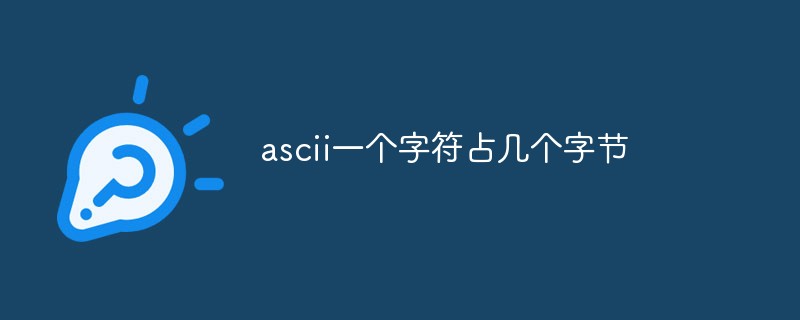
ascii One character occupies one byte. ASCII code uses a specified 7-bit or 8-bit binary number combination to represent 128 or 256 possible characters; standard ASCII code is also called basic ASCII code and uses 7-bit binary Numbers represent all uppercase and lowercase letters, numbers 0 to 9, and punctuation marks.

#The operating environment of this article: Windows 7 system, Dell G3 computer.
The ASCII code of one character occupies 1 byte of storage space.
In 1967, the International Standards Organization (ISO: International Standards Organization) recommended a variant of ASCII, the codes 0x40, 0x5B, 0x5C, 0x5D, 0x7B, 0x7C and 0x7D "reserved for national use", while Codes 0x5E, 0x60 and 0x7E are marked as "can be used for other graphic symbols when domestically required special characters require 8, 9 or 10 space positions".
It started in the late 1950s and was finalized in 1967. It was originally an American national standard and was used as a common Western character encoding standard for different computers to communicate with each other. It has been established as an international standard by the International Organization for Standardization, called the ISO 646 standard. Applies to all Latin script letters.
Extended information:
ASCII code expression:
ASCII code uses a specified 7-bit or 8-bit binary number combination to represent 128 or 256 possible characters. Standard ASCII code, also called basic ASCII code, uses 7 binary digits (the remaining 1 binary digit is 0) to represent all uppercase and lowercase letters, numbers 0 to 9, punctuation marks, and special controls used in American English. character.
Among them:
0~31 and 127 (33 in total) are control characters or special communication characters (the rest are displayable characters), such as control characters: LF (line feed), CR ( Enter), FF (page feed), DEL (delete), BS (backspace), BEL (ring), etc.; communication special characters: SOH (head of text), EOT (end of text), ACK (confirmation), etc.;
ASCII values 8, 9, 10 and 13 are converted to backspace, tab, line feed and carriage return characters respectively. They do not have a specific graphic display, but will have different effects on text display depending on the application.
Related video recommendations: PHP video tutorial
The above is the detailed content of How many bytes does one ascii character occupy?. For more information, please follow other related articles on the PHP Chinese website!




